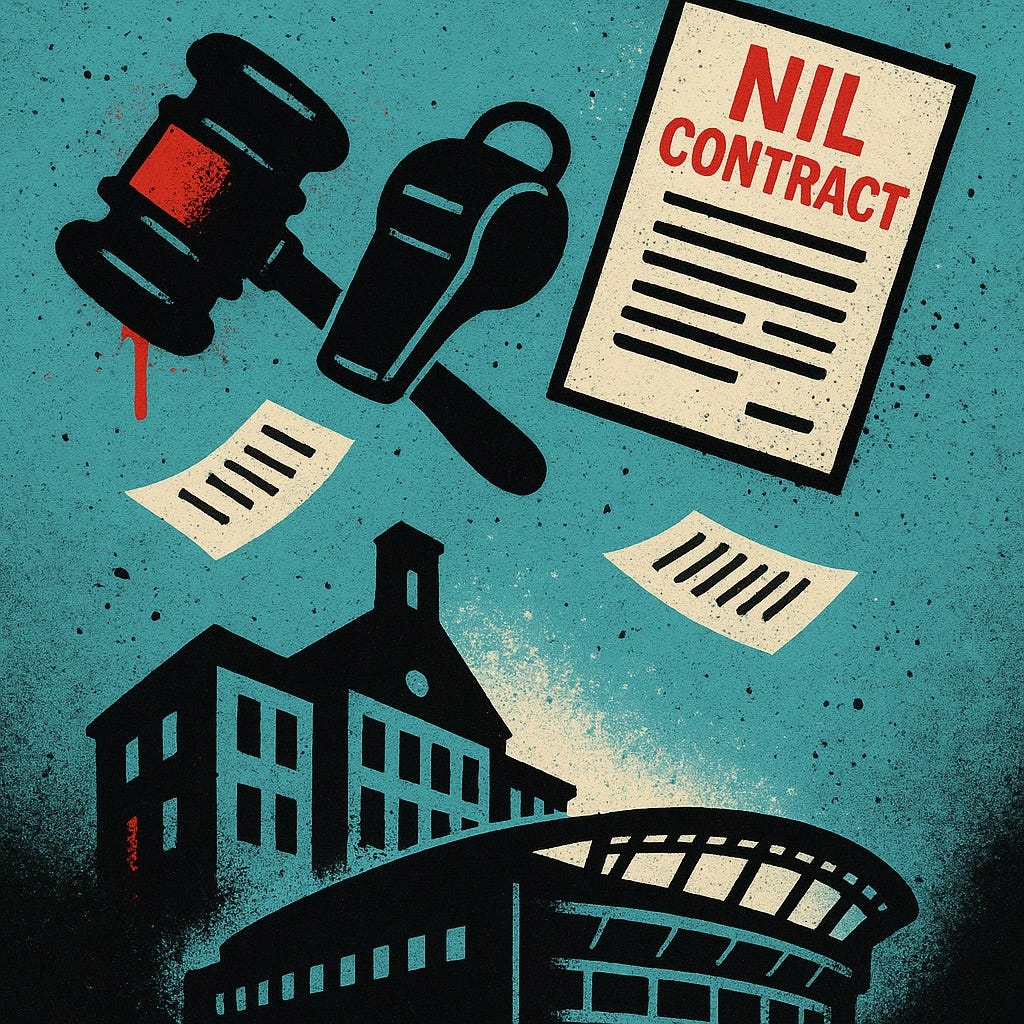The Quiet Legal Storm: How NIL and Pay-for-Play Are Reshaping University Risk
It began, as many shifts in sports do, with a celebration.
A star quarterback signed a seven-figure NIL deal before ever taking a snap. A freshman basketball phenom became a millionaire overnight through a local collective. Boosters and alumni cheered, athletic departments embraced the momentum, and universities declared the dawn of a new era.
Behind the scenes, though, the atmosphere was less triumphant. Athletic directors traded wary messages. University counsel updated risk matrices. Compliance officers quietly recalibrated playbooks. The amateur model that defined college sports for more than a century hadn’t merely evolved — it had cracked open.
From Cultural Shift to Legal Reality
The House v. NCAA settlement, finalized earlier this year, was the headline that could not be ignored: $2.8 billion in retroactive athlete payments and a framework allowing universities to share revenue directly with players.
Less visible, but more consequential, was the legal realignment that followed. Universities — once protected behind NCAA regulatory walls — now find themselves directly exposed in a semi-professional marketplace.
And that shift is no longer theoretical:
Alumni athletes are filing retroactive NIL lawsuits, some seeking tens of millions in damages.
Current players are suing over eligibility decisions, tying lost playing time to lost NIL income.
Institutions are initiating legal action against each other, alleging tampering and interference in transfer negotiations.
The courtroom has joined the playing field.
🧨 The Wisconsin–Miami Moment
When Wisconsin filed suit against Miami earlier this year, alleging tampering over a revenue-sharing NIL arrangement tied to a transfer athlete, the case quietly signaled a new era. On the surface, it was a contractual dispute. In substance, it was the first visible example of institution-vs-institution NIL litigation — the kind of legal friction familiar to corporate M&A lawyers, not college compliance offices.
For presidents, athletic directors, and general counsels, this was more than sports news. It was a preview of the legal landscape that lies ahead.
“Universities are now navigating legal terrain that blends antitrust, employment law, and competitive strategy. The traditional guardrails are gone.”
The Emerging Risk Profile
The NIL/pay-for-play era is producing a new legal and operational risk map for higher education. Several key vectors stand out:
Retroactive NIL Claims
Former athletes are challenging historic uses of their name, image, and likeness — some reaching back more than a decade.
Eligibility-Linked NIL Damages
Players are asserting financial harm when eligibility rulings or transfer decisions affect their NIL market value.
Inter-University Litigation
Tampering disputes, once confined to the rumor mill, are entering courtrooms.
Regulatory Fragmentation
Divergent state laws, evolving federal court rulings, and shifting NCAA positions are creating a complex compliance mosaic.
Employment Classification Risks
The growing possibility that athletes could be reclassified as employees would trigger wage, benefits, labor, and Title IX implications far beyond traditional athletic department governance.
These risks do not fit neatly into traditional insurance programs or compliance manuals. They demand institution-wide strategic foresight.
Strategic Risk Demands Strategic Response
Universities that approach NIL purely as a fundraising or compliance challenge will find themselves reacting to crises rather than shaping their futures.
Those that treat NIL as a strategic enterprise risk — akin to cybersecurity, financial reporting, or employment practices — will be the institutions that lead through the turbulence ahead.
At Gallagher, we are curating tailored risk strategies designed to meet this moment. Our work with universities, conferences, and athletic departments focuses on building forward-looking frameworks that anticipate litigation trends, align with evolving regulation, and protect institutional balance sheets — while preserving flexibility in a highly competitive environment.
A New Conversation for a New Era
University presidents are now stewards of semi-professional ecosystems. Athletic directors are managing hybrid labor markets. General counsels are navigating antitrust, employment, and contractual challenges unprecedented in collegiate athletics.
The legal storm isn’t coming. It’s here.
The institutions that will thrive are those that think like strategists, act like stewards, and build like enterprises.
For conversations on how emerging NIL litigation trends intersect with your institution’s risk posture and strategic planning, reach out to:
Ayo Fapohunda
Area Vice President — Gallagher
📞 412-607-8854


